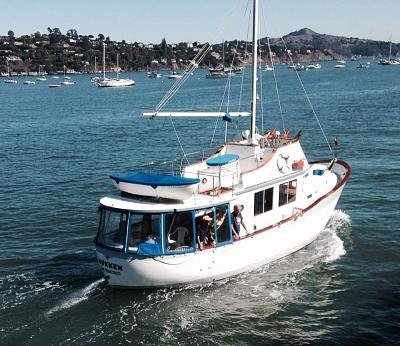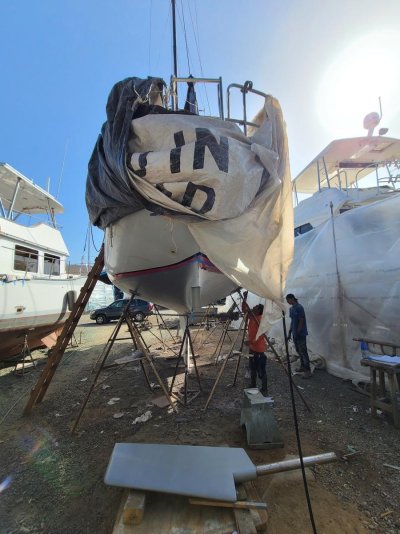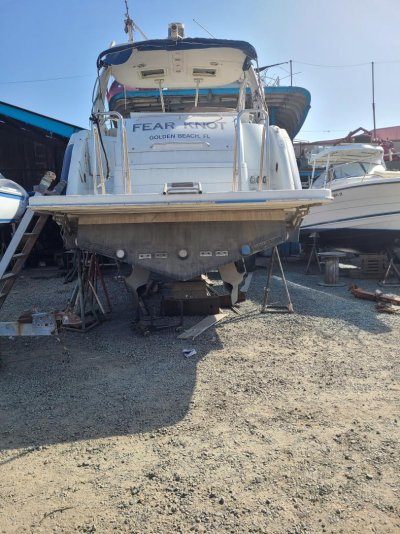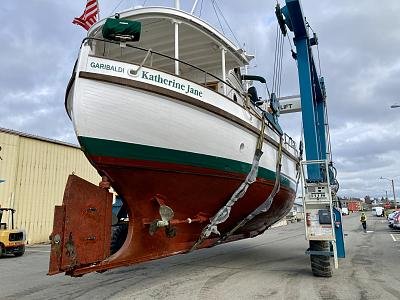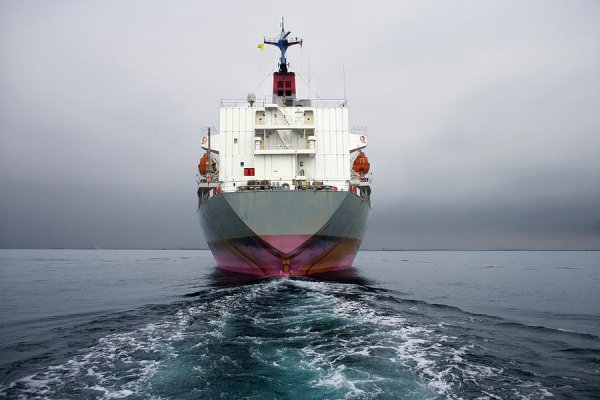Well, I have no data beyond observation, but my strong hunch is a double-ender is indeed more efficient. Attached is a great picture of a sister-ship to Weebles on SF Bay doing a little over 5-kts, about 1.0 S/L ratio. Look how clean her stern wake is. Contrast that to transom boats at 1.0 S/L and you will see a ton of eddies behind it. That is all wasted energy.
Where I absolutely agree is what is above the waterline makes no difference. The KK42 is famous for a wine-glass transom that is effectively a double-ender at the waterline.
I snapped a few pics of boats in the boatyard today to show how boats carry beam at the stern/transom. I believe the sailboat with tarp over the transom is a Catalina 38, unique in that it was not an in-house/Frank Butler design but rather a S&S design from the 1970s. A nice reverse transom with very mannerly double-ender at the waterline.
The next picture is a Formula 41 (sistership to Comodave??) - note the steep dead-rise at the transom. Guessing this would move pretty nicely in 3-4 foot chop, but at displacement speeds, would have a ton of eddies dragging the stern.
The last pic is of a classic double-ended trawler similar to the Willard 36. Easy to understand how it slips through water with minimal disruption - let's face it, there's a reason fish are shaped the way they are.
Finally, in my opinion, threads like this often state something to the effect of
"at displacement speeds, SD is roughly the same efficiency/fuel-burn as FD." I'm not sure thats true - it ignores effect of Prismatic Coefficient, a design parameter whereby the naval architect matches the hull-form to the intended operating conditions. This is probably why the Willard 40 can run almost 7-1/4 kts (1.2 S/L) in open ocean conditions and burn just 1.5 gph whereas a similarly powered SD would burn over 2-gph at same S/L. Nothing wrong with making that choice to go with SD, but saying efficiency doesn't matter likely isn't entirely accurate.
There are a lot of reasons NOT to own a double-ender such as lost storage and no swim platform, but there are very likely efficiency benefits. The KK42 solution of double-ended at waterline but transom above strikes a good balance.
Peter
EDIT - the reason I own a double-ender is because I fell in love with the Willard. Nothing too rational or analytical. As my wife says
"Real boats have round butts!"
